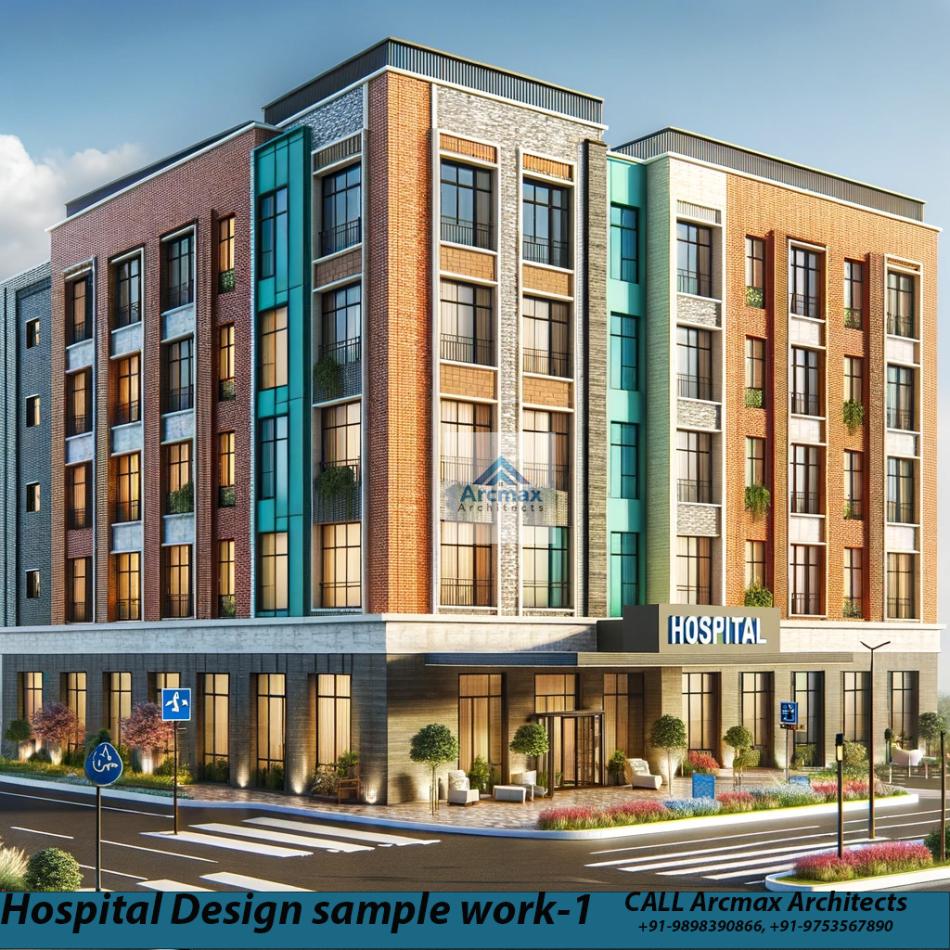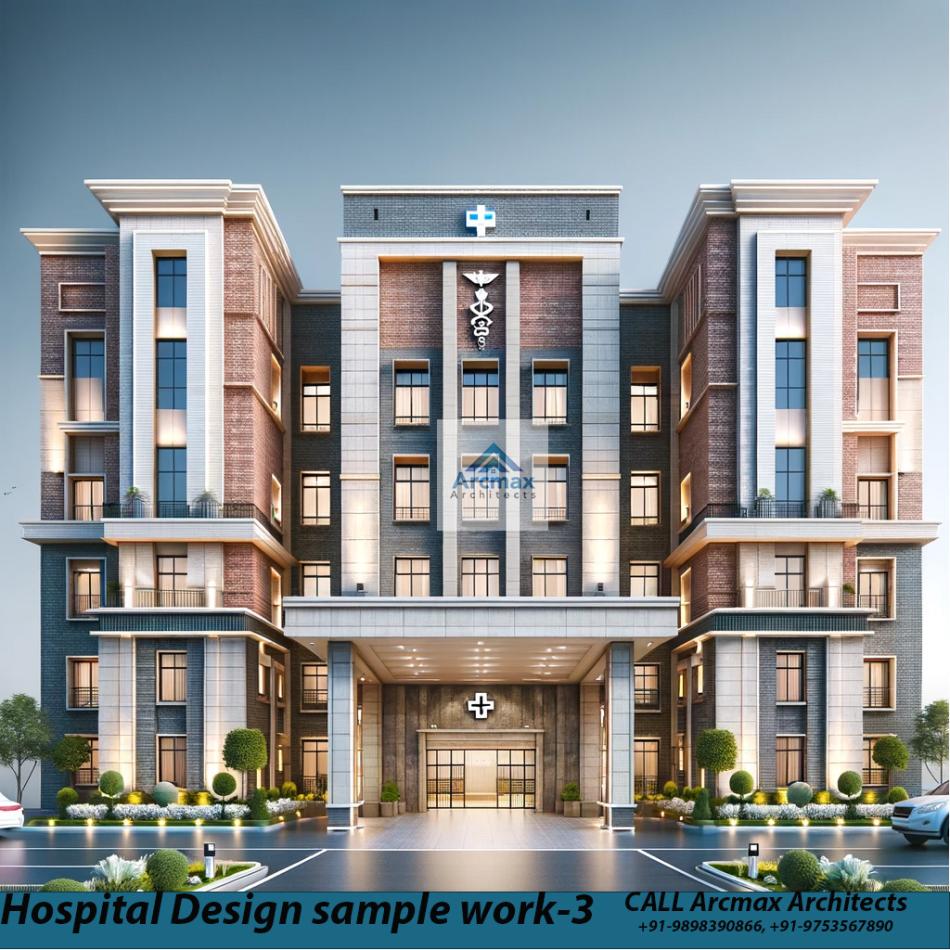Creating Efficient Healthcare Spaces: Best Small Hospital Design in India
Designing a hospital is a complex and specialized task. Hospitals are not just buildings; they are spaces where patients, staff, and visitors interact daily. Every aspect of a hospital, from layout to lighting, impacts patient care, safety, and operational efficiency. This makes it crucial to focus on the Best Small Hospital Design to ensure optimal functionality and comfort.
In India, the demand for well-planned medical facilities is growing rapidly. Engaging experienced Healthcare Architects in India can help transform ideas into functional, patient-centric hospital designs that comply with global healthcare standards.
Why Small Hospital Design is Important
Small hospitals face unique challenges compared to large medical institutions. Limited space and budget constraints mean that every square meter must be used efficiently. A well-thought-out small hospital design ensures that:
Patient flow is smooth, minimizing waiting times.
Critical areas like emergency rooms, ICUs, and operating theaters are easily accessible.
Staff can perform duties efficiently with reduced travel distances.
Infection control and hygiene are maintained through intelligent zoning.
The goal is to create a hospital that delivers quality care without feeling cramped or overwhelming.

Key Elements of the Best Small Hospital Design
A successful small hospital design combines functionality, aesthetics, and patient comfort. Here are the essential components:
Patient-Centric Layout
Patient comfort and safety should be the top priority. Clear signage, intuitive navigation, and private consultation spaces contribute to a positive experience. Designing patient rooms with natural light and ventilation improves recovery and satisfaction.Efficient Zoning
Healthcare spaces must separate public, semi-public, and restricted areas. Emergency rooms, diagnostics, and surgical areas require distinct access to maintain hygiene and privacy.Sustainable Design
Modern small hospital designs emphasize energy efficiency, water conservation, and sustainable materials. Natural ventilation, LED lighting, and solar energy options reduce operational costs while promoting eco-friendliness.Technology Integration
Smart hospitals incorporate advanced medical equipment, digital records, and automated systems. Proper planning ensures that technology enhances patient care without disrupting workflows.Flexible Spaces
Modular and adaptable spaces allow hospitals to expand services without major renovations. Multi-purpose rooms can accommodate different functions as healthcare needs evolve.
Role of Healthcare Architects in India
Designing a hospital requires expertise beyond conventional architecture. Healthcare Architects in India specialize in creating medical facilities that meet both regulatory requirements and patient expectations. Their services include:
Site Analysis: Evaluating location, accessibility, and environmental factors.
Master Planning: Efficiently allocating spaces for clinical, administrative, and support functions.
Interior Design: Creating patient-friendly interiors that enhance comfort and safety.
Regulatory Compliance: Ensuring the design adheres to national building codes and healthcare regulations.
Sustainability: Incorporating green practices and energy-efficient systems.
By collaborating with specialized architects, hospital owners can ensure the design not only looks appealing but also functions seamlessly.

Trends in Small Hospital Design
Recent trends in small hospital architecture in India focus on holistic and sustainable care. Key trends include:
Healing Environments
Incorporating nature, gardens, and natural lighting improves patient recovery and reduces stress.Telemedicine-Friendly Spaces
With the rise of digital healthcare, small hospitals now integrate telemedicine rooms and virtual consultation facilities.Flexible Emergency Departments
Emergency spaces are being designed to handle sudden surges in patients efficiently, without compromising other departments.Patient and Staff Safety
Contactless systems, infection control measures, and ergonomic designs protect both patients and healthcare workers.Smart Infrastructure
Incorporating IoT, AI, and real-time monitoring systems helps hospitals operate efficiently while maintaining high-quality care.
Benefits of Hiring Professional Healthcare Architects
Working with experienced Healthcare Architects in India offers multiple advantages:
Optimized Workflow: Reduces staff fatigue and improves patient throughput.
Cost Efficiency: Smart design reduces construction and operational costs.
Enhanced Patient Experience: Thoughtful design ensures comfort, privacy, and faster recovery.
Future-Proofing: Flexible layouts allow for easy expansion or upgrades.
Regulatory Compliance: Avoid costly mistakes related to building codes and healthcare regulations.
Investing in professional architecture services ensures your small hospital meets both current needs and future demands.
Conclusion
The Best Small Hospital Design is more than just aesthetics; it’s about creating a space that enhances patient care, staff efficiency, and operational excellence. In India’s evolving healthcare landscape, collaborating with skilled Healthcare Architects in India is essential for achieving these goals.
From patient-centric layouts to sustainable and technology-enabled facilities, the right design can transform a small hospital into a highly efficient and welcoming healthcare institution. Whether you are establishing a new hospital or upgrading an existing one, prioritizing expert design will ensure a lasting impact on patients, staff, and the community.
Comments
Post a Comment